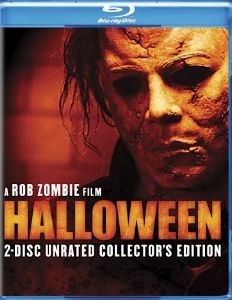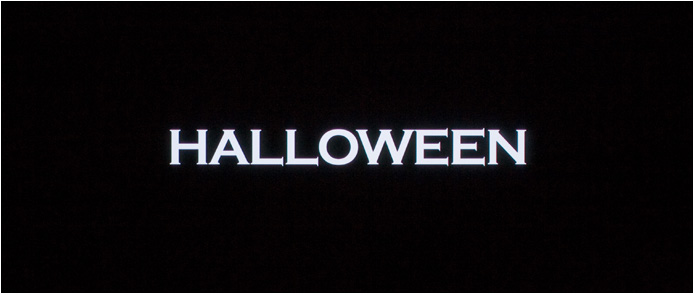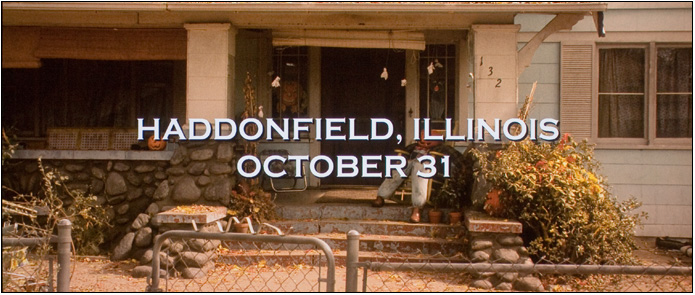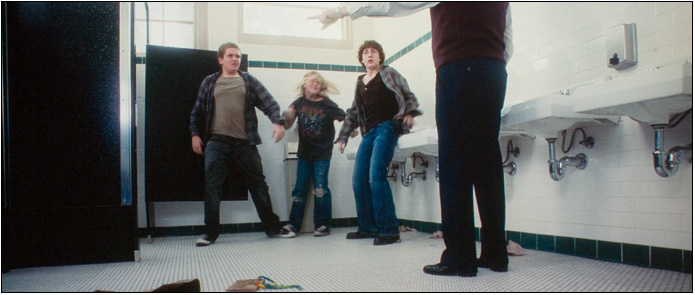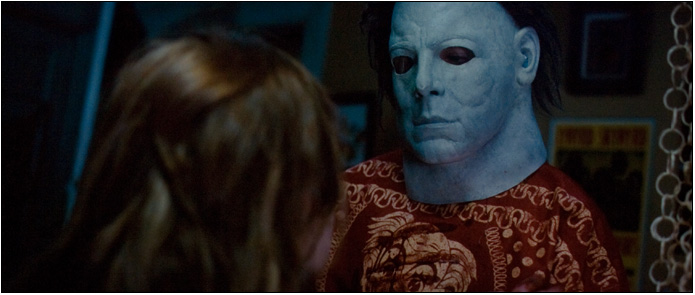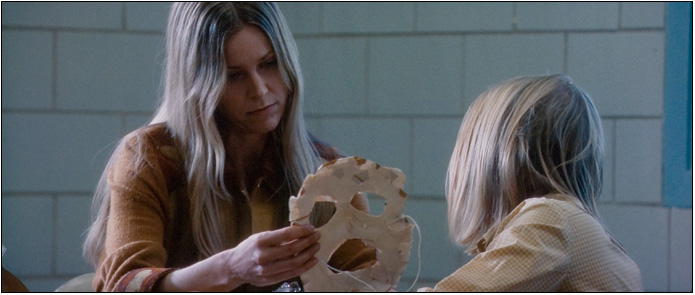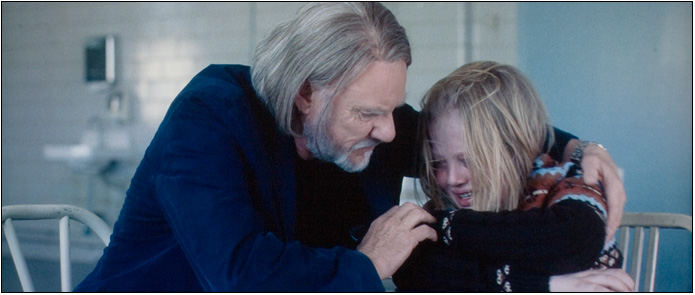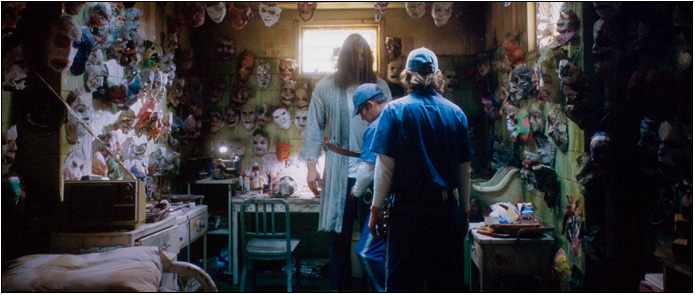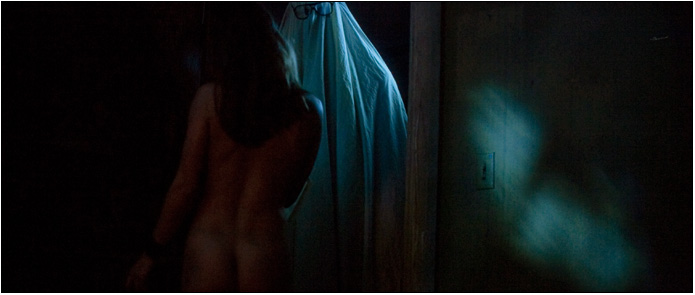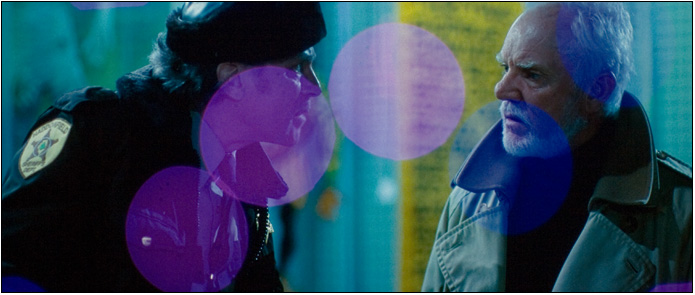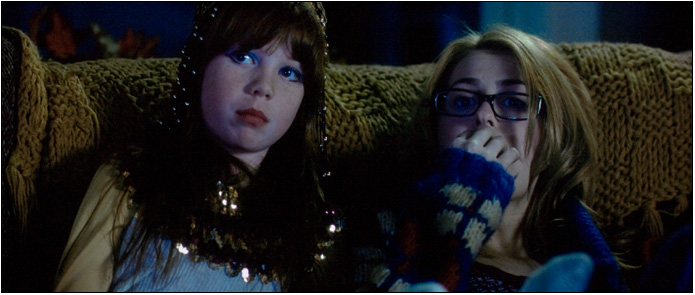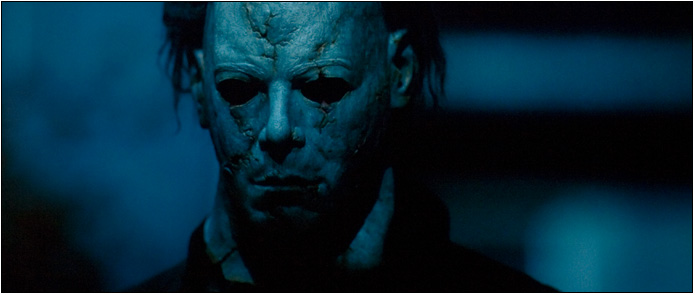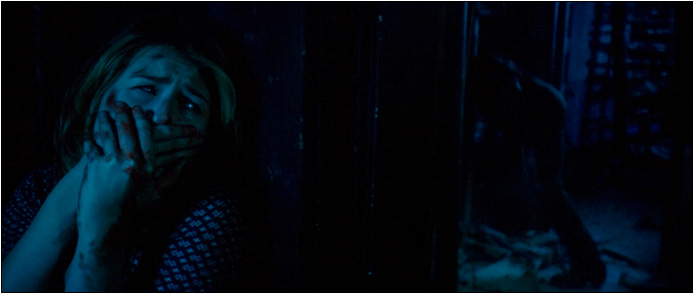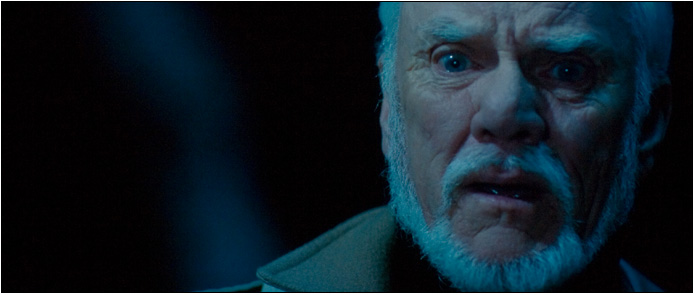Review by Leonard Norwitz
Studio:
Theatrical: Dimension Films
Blu-ray: Genius Products/Dimension Extreme
Disc:
Region: All
Runtime: 121 min
Chapters: 24
Size: 50 GB
Case: Standard Amaray Blu-ray case
Release date: October 21, 2008
Video:
Aspect ratio: 2.35:1
Resolution: 1080p
Video codec: AVC
Audio:
English D5.1 Dolby TrueHD, English DD 5.1
Subtitles:
English SDH & Spanish (feature film only)
Extras:
• Disc 2: Documentary: Michael Lives: The Making of
Halloween (4 hrs. 20 min.)
• Commentary by Writer/Director Rob Zombie
• Deleted scenes with optional commentary. (22:19)
• Alternate ending with optional commentary. (3:45)
• Featurette: The Many Masks of Michael Myers (6:26)
• Featurette: Re-imagining Halloween (19:11)
• Featurette: Meet the Cast (18:16)
• Featurette: Casting Sessions (29:52)
• Scott Taylor-Compton screen test (7:47)
• Bloopers (10:18)
• Theatrical Trailer (in letterboxed 480p)
The Film:
For those of you (like myself) who didn't already know
but must be dying to ask: since about the late 1980s,
having founded the heavy metal band, White Zombie, Rob
Zombie has been the stage name of Robert Bartleh
Cummings and, appropriately enough, the name he used to
write and direct his remake of John Carpenter's classic
1978 Halloween. Despite his movie being generally panned
by critics (Rotten Tomatoes scores 26% and Metacritic
47), Zombie's Halloween has been the biggest money maker
of the Halloween movies (according to Wikipedia.)
Given its ratings, which I had more or less in mind
having looked it up in passing interest many moons ago,
I came to my first viewing with low expectations. Much
to surprise, I found that Rob Zombie actually knows
something about how to put a movie together. More about
that shortly. Zombie's Halloween is very much a rethink
of Carpenter's film. The Michael of the original is
actually the Boogieman: the manifestation of mindless
Evil. There is no explanation offered for his killing.
He just kills, and he's pretty much unstoppable. Zombie,
on the other hand, spends a considerable part of his
movie (nearly half) in placing Michael in a
psycho-social context, though he is smart enough to
assure us that his environment doesn't explain him, it
only provides the catalyst. As Dr. Loomis puts it: A
perfect storm of internal and external factors gone
violently wrong.
Zombie's Michael is 10 when he commits his first murder,
already 4 years older than Carpenter's, which not only
gives him not only more time for the social context to
work its way into him but, being older, he's also
stronger and does more damage. When Michael makes good
his escape from the psych hospital many years later, he
is correspondingly bigger and stronger as well (the
actor who plays, Tyler Mane, is 6' 9"), with a greater
body count to his credit.
There is something particularly creepy about Carpenter's
Michael simply because he is so primitive, so
inexplicable. Our identification is with his victims
because they are innocent. Not so in Zombie's film.
Though no one deserves to die at his hands, most of his
victims – with a few exceptions of the ones we have some
acquaintance – are just nasty enough that we find
ourselves rooting for Michael as a sort of avenging
angel, however criminally psychopathic he may be. This
may be an uncomfortable place to live in, even for two
hours, and it may or may not have been Zombie's intent,
but I found the feeling fascinating to sort out. All the
same, I think it gets in the way of coherency.
As for the filmmaking itself, aside from some painfully
clichéd dialogue and line reading, especially in the
earlier parts of the movie, Zombie has an informed way
with camera and lighting. There are some moments of
genuine terror – as when Michael tears down a ceiling
searching for Laurie (played by a sympathetic, but
generally unsimpering18 year old Scout Taylor-Compton)
who is up there trying vainly to stifle her screams, or
when Laurie leaves an envelope in the door slot of the
old Myers home and Michael, waiting on the other side,
takes it from her. There is sometimes a fusion of time
and place almost more artful than it needs to be, that
is, until we learn more about why Michael is so set on
following Laurie in particular.
Zombie can be painterly with his images: as the
juxtaposition of Laurie, a tombstone, and the body of
her girlfriend lying nude and dead in the small room she
is imprisoned in; or when Laurie is trapped at the deep
end of an empty swimming pool, filled with fallen dead
leaves, as Michael makes his way toward her; or in
Michael's cell in the hospital completely lined with his
handmade masks. It is the mask that is the main image of
the movie. When Michael makes his way back to his home
after so many years and he digs up his old knife and the
adult mask he killed his sister in, we feel how he has
grown into that mask and that it has become him and
vice-versa. I have to admit, it's a compelling piece of
cinema.
My teeth still itch at Dr. Loomis' line at the end when
he says in response to the question of Michael's being
the boogeyman: As a matter of fact. . . I do believe it
was. It's a terrible line, far too parsed for this
moment, and even more badly recited by Malcom McDowell
than Donald Pleasence. A simple 'Yes' would have
sufficed. After all, it's a conclusion Loomis resisted
for 15 years. In any case you can't have (AS fact of
matter aand I believe do)in the same sentence. Loomis may be exhausted, but
he's still an educated man.
Zombie does rely too heavily on Carpenter's music, as
perfect as it is most of the time, just as he rarely
cuts away from Michael's slashing. It does become a bit
much, but just when things could get worse, his film
turns poetic. He's a very strange filmmaker.
Image:
7/8
The first number indicates a relative level of
excellence compared to other Blu-ray video discs on a
ten-point scale. The second number places this image
along the full range of DVD and Blu-ray discs.
From the look of the parts of the film that show off the
medium, I'd guess that this Blu-ray does a better than
fair job of recovering the image that's on the film.
Especially in the first part of the film, the raw and
hand-held photography seems careless, without little
regard to lighting. But over time, it is clear that what
we see is likely what is on the neagtive. Since much of
the movie takes place at night it is of utmost
importance that it be free of noise in the shadows – and
so it is. And there are shadows, and the shadows do or
do not have information as filmed. I was not aware of
worrisome artifacts or dirt. Bit rates generally in the
upper 30s. I was, frankly, surprised.
Audio & Music:
9/8
The audio track mixes music with FX at times like a
sound painting. One of the best examples is the scene
where Michael tears down the ceiling searching for
Laurie. What begins as a naturalistic rendering of the
breaking up of wood, evolves into a complex pastiche of
music and increasingly scary noises. At a couple of
points I actually thought my upstairs neighbors were
pounding on my ceiling, as if to demand I turn the
volume down, but it was all in the mix. Brilliant!
Dialogue could have been a tad clearer at times. I would
have given the music rating a higher score if there was
a little less of Carpenter's theme.
Operations:
5
Chapters are viewable only a few at a time, so search is
hampered. Similarly, the extra features are viewable
only a couple at a time: if you want to see more, you
have to click - more than once before you're done.
Extras:
8
Probably no better example of the discrepancy between
the persona and the artist can be found than on these
extra features. Here's a man with more tattoos than
visible skin, who introduces himself as Rob Zombie on
the feature commentary, yet who speaks in reassuring
tones, without a trace of connotation for his namesake.
His manner is professional without condescension,
confident,
yet
open. His comments are a well thought out diary of his
creative process. Much the same could be said of his
remarks for the ending he shot first and the deleted
scenes, which he rightly discarded. Oh, yes, there's a
four-hour-plus documentary on the making of Halloween –
all six weeks of shooting plus preproduction - on the
second disc in widescreen 1080i – more than you
ever want to know about such things.
|
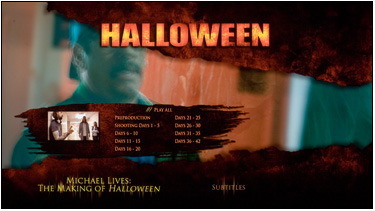 |
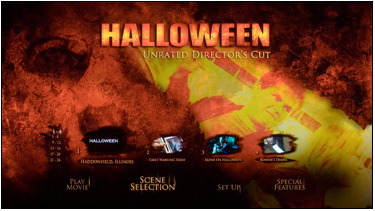 |
|
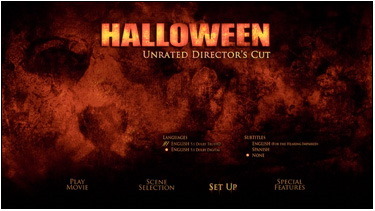 |
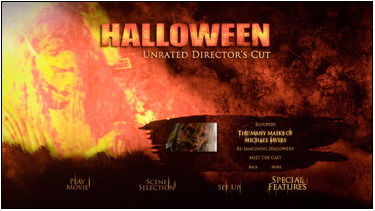 |
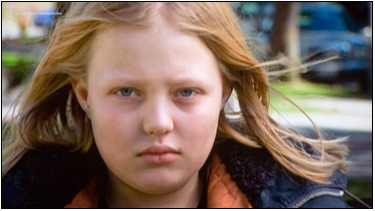 |
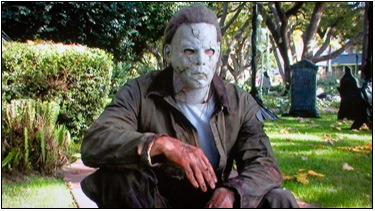 |
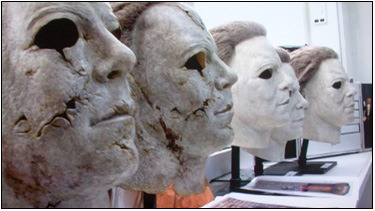 |
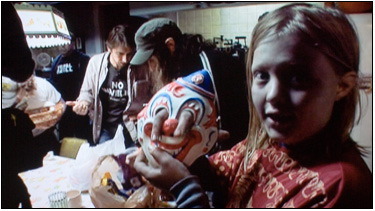 |
Bottom line:
7
I'm still surprised. You have to be willing to exchange
one nihilistic vision for another. This is not
Carpenter, but neither is it pornographic. Good picture.
Very good sound. Worth a look.
Leonard Norwitz
October 14th, 2008
![]()
![]()

![]()
![]()
![]()
![]()

![]()
![]()
